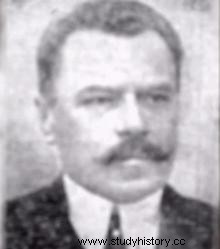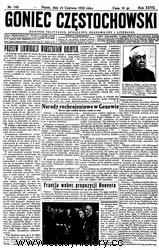Textbooks say that tsarist Russia ceased to exist with the abdication of Nicholas II. There was, however, the capital where the official tsarist embassy, recognized by the local authorities, operated a dozen or so years later! And it is not about Paris or London at all, but Romanian Bucharest.
This unusual diplomatic curiosity was born as a result of the border conflict between Romania and the Bolshevik empire. He also added his three cents ... the stubborn tsarist ambassador.
The said diplomat was Count Stanisław Koziełł-Poklewski. He was accredited in Bucharest literally on the eve of the outbreak of World War I, which (as you know) ended very badly for the tsarist family.

And here is Stanisław count Koziełł-Poklewski himself.
However, our diplomat - as reported in 1932 by "Goniec Częstochowski" - did not think to resign from his function. The reason was very simple: the tsarist decree appointing the ambassador has not yet been canceled . Besides, the information about the death of the tsar has not been confirmed by anyone, and "rumors" in the press have no legal significance for the ambassador.
Only car can dismiss me
Of course, an eccentric approach to the Poklewski case would have no meaning were it not for the aforementioned border conflict. Its cause was the occupation by the Romanians in 1918 of Bessarabia, which was also claimed by Bolshevik Russia.
As a result of the dispute, the two countries did not establish diplomatic relations with each other until 1934. This - and the favor of the wife of the Romanian king Ferdinand I, related to the Romanovs - enabled the tsarist post to operate many years after the revolution.

The operation of the tsarist embassy in Bucharest was possible thanks to the border conflict between Romania and the USSR and the favor of Queen Maria Koburg.
Although a better word than action would be to vegetate. Fifteen years after the fall of the tsarist regime, little is left of the embassy's former glory. According to the report of the Częstochowa daily:
gilded rails in front of the embassy blackened with age, plaster is peeling off the front, the double-headed eagle above the entrance portal wobbles with every gust of wind and it will fall on the street any day.
The interiors were also in a deplorable condition. In the consulate located at the embassy, there was an image of poverty and despair, dirt, dust, cobwebs, empty wine bottles in the corners of the rooms. Moreover, anything of any greater value had long since been sold.

Poklewski's office did not end until 1934, when the first Soviet diplomat, Mikhail Ostrowski, arrived in Bucharest.
Ambassador at the post
Also, the staff of the diplomatic mission has been significantly reduced. Out of the sixteen people who still worked there in 1918, fifteen years later, only four remained. Apart from the ambassador, they were:consul dr. Milikom, first secretary and janitor.

The title page of the issue of "Goniec Częstochowski", which became the basis for writing the article.
Nevertheless, in 1932 the ambassador - who was no longer active in public - received official invitations to meetings of the diplomatic body or to receptions at M. S. Z. Bucharest. Moreover, as if he exhibited nothing tsarist passports! However, to obtain such an "honor", the applicant had to prove his loyalty to the Tsar.
This curiosity was finally put to an end only by the already mentioned establishment of diplomatic relations between Romania and the Soviet Union in 1934. In December of that year, a new Soviet representative, Mikhail Ostrowski, arrived in Bucharest.
In this situation, Koziełł-Poklewski, as persona non grata, was forced to leave Romania. Thus ended the history of the scrap of the imperial empire in Bucharest, which had existed for the long seventeen years after the abdication of Nicholas II.
